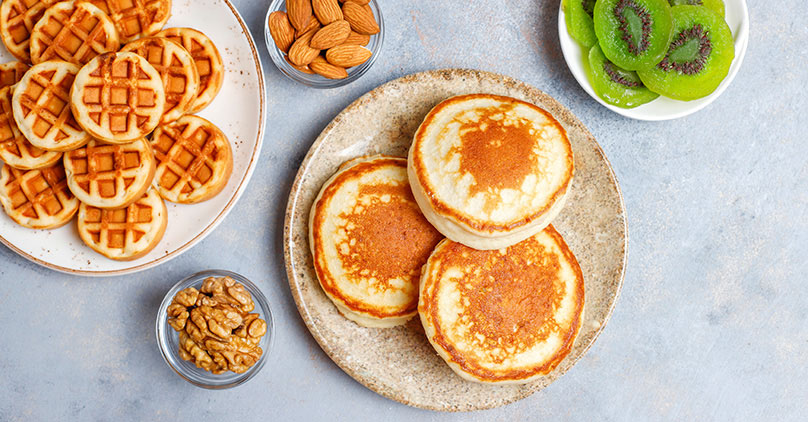The Scientific Secret of Fluffy Pancakes

Have you ever wondered what makes pancakes so fluffy? Why do pancake recipes always tell you not to overmix the batter? The answers to these questions lie in a protein called gluten.
In this activity, you'll learn about the chemical processes that make pancakes fluffy—and also why overmixing your pancake batter will result in tough, rubbery, and flat pancakes.
Here is The Process:
Pancake batter is composed of two crucial parts: dry ingredients (usually flour, sugar, baking powder, baking soda, and salt) and wet ingredients (usually milk, eggs, and butter). Flour contains starch and protein. Starch is like a long chain of simple sugars. An example of simple sugar is glucose, which is what plants produce to feed themselves in a chemical process called photosynthesis.
A protein is a long, chainlike molecule made up of smaller molecules called amino acids. Flour contains a protein called glutenin (or gluten), which is crucial for the formation and structure of pancakes and baked goods. Gluten also provides a "chewy" texture in pancakes and bread.
When the flour is dry, the gluten molecules are nearly immobile, which means that they do not move much. They also do not bond (or "link") to one another. When the flour is moistened with water (or with milk and eggs, which are composed mainly of water), the gluten molecules become active.
Wet gluten molecules are elastic and spring-like (which means that they can change shape under pressure) and plastic (meaning they can maintain their shapes after being stretched and moved around). When flour is mixed with water, gluten proteins loosen from one another, stretch out and begin to rearrange. Further mixing allows the end of a gluten protein to bond with the end of another gluten protein.
As the gluten proteins come in contact with one another, they continue to bond. With additional mixing, the proteins create a tighter and tighter weblike network of proteins that can trap air bubbles. When chemical leaveners, such as baking powder, create bubbles in a cooked pancake, the gluten network traps these bubbles and allows a pancake to rise and stay fluffy yet still keep its shape.
Share This